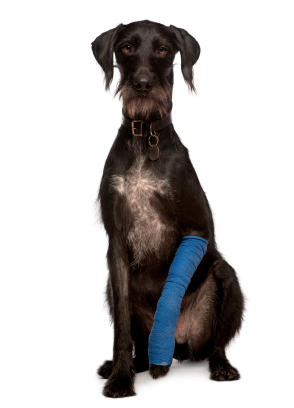Patellar Luxation: Your Pet’s “Trick” Knee
 Patellar luxation, or the tendency of the knee cap to dislocate, is a relatively common problem in our pets, particularly small breed dogs.In these animals, the patella will move out of the normal groove where it should rest and “pop” onto one side of the knee (usually toward the inside). When this happens, the pet may become suddenly lame until the knee cap moves back into place. Continued occurrence of this can lead to the development of arthritis in the joint as well as chronic pain and decreased mobility.
Patellar luxation, or the tendency of the knee cap to dislocate, is a relatively common problem in our pets, particularly small breed dogs.In these animals, the patella will move out of the normal groove where it should rest and “pop” onto one side of the knee (usually toward the inside). When this happens, the pet may become suddenly lame until the knee cap moves back into place. Continued occurrence of this can lead to the development of arthritis in the joint as well as chronic pain and decreased mobility.
Four grades of severity are recognized:
Grade 1: The patella can be pushed out of place but will return on its own.
Grade 2: The patella can be pushed out of place but will not return back to the normal position without help.
Grade 3: The patella is always out of place but it can be pushed back into place.
Grade 4: The patella is permanently out of place and cannot even be put manually back into the correct position. The limb or limbs are unable to extend and the animal walks balancing its weight on the forelimbs.
For milder forms of patellar luxation, treatment such as restriction of exercise, anti-inflammatories, and joint protective supplements such as glucosamine and chondroitin are often recommended. Overweight pets often benefit from weight reduction as well.
Some pets with grade 2 patellar luxation and virtually all of those with grade 3 or 4 patellar luxation benefit from surgical correction of the condition. Several techniques for correction exist. Depending on the severity and nature of the problem, surgery can help to improve the stability of the knee joint, reducing further changes and deterioration.


